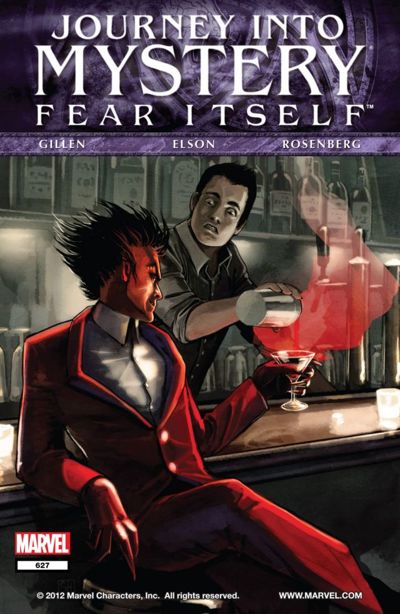
For all Marvel’s recent success at the box office with its Cinematic Universe, its small-screen efforts have thus far been a mixed bag. Most people will agree that its first series, Agents of SHIELD (I refuse to put the periods in there), got a lot better once it caught up with the events of Captain America: The Winter Soldier, but there’s no doubt that it struggled at first to define itself, lacking both the personality and—more forgivably given its budget—the grandeur of the Marvel films. Their second series, Agent Carter, has improved by leaps and bounds over SHIELD’s debut even as SHIELD itself in its second season has begun to bring much more life and excitement to its proceedings with an expanded and more-colorful cast freed to the bureaucratic doldrums of the series’ beginning. Later this year, Marvel’s television roster will have doubled with the arrival on Netflix of both Daredevil and AKA Jessica Jones, with three more series to follow further down the line—and all within the same contiguous universe as the films.
For Star Wars fans, Marvel is the ultimate guinea pig for the Age of Disney. What success Marvel has had at the box office Lucasfilm now seeks to reproduce with both a sequel trilogy and no doubt several standalone films, and with more options for small-screen, lower-budget productions than ever before, it stands to reason that they’re watching Marvel’s television operations with great interest. Here are some things I think they should keep in mind. Read More

 Disney has a new generation in its hands. The youngest generation of Star Wars fans, brought in by The Clone Wars and Rebels and now the sequels, will be growing up with new heroes. There are definitely some Star Wars fans now who were introduced to the GFFA with Clone Wars, identified a lot with Ahsoka and her age. The equivalent, for many of us who were big EU fans as children, ran into a group of younger characters varied enough that all of us could identify with at least one of them. They were closely connected to the familiar characters of Star Wars, and made their own stories within the GFFA. As a series and for what it did for the SW universe, it would be worth it for Disney to learn from the Young Jedi Knights series.
Disney has a new generation in its hands. The youngest generation of Star Wars fans, brought in by The Clone Wars and Rebels and now the sequels, will be growing up with new heroes. There are definitely some Star Wars fans now who were introduced to the GFFA with Clone Wars, identified a lot with Ahsoka and her age. The equivalent, for many of us who were big EU fans as children, ran into a group of younger characters varied enough that all of us could identify with at least one of them. They were closely connected to the familiar characters of Star Wars, and made their own stories within the GFFA. As a series and for what it did for the SW universe, it would be worth it for Disney to learn from the Young Jedi Knights series. We continue with our look back at representative works penned by the new writers of the Marvel Star Wars comics.
We continue with our look back at representative works penned by the new writers of the Marvel Star Wars comics. 
